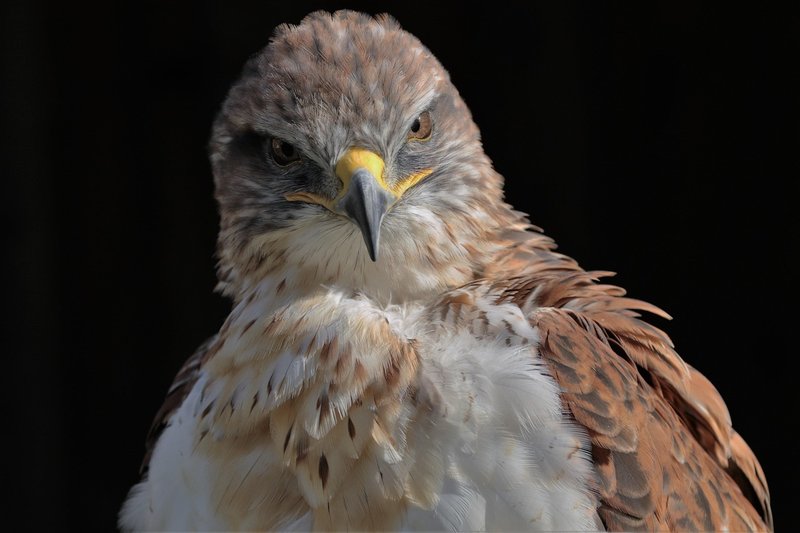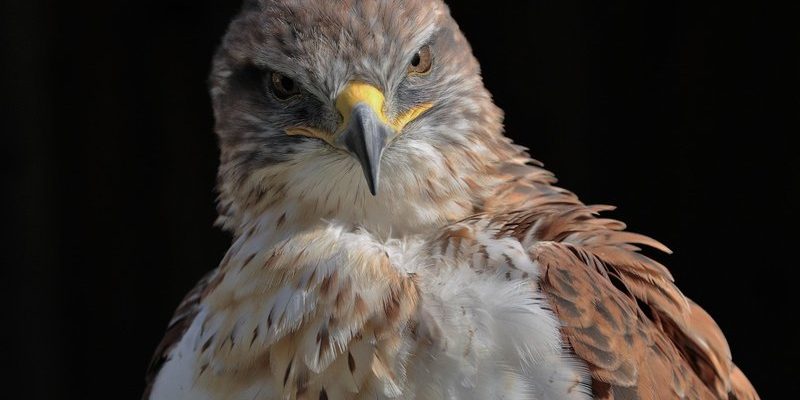
Ferruginous Hawks aren’t just impressive for their size; they have distinct features that make them easier to recognize once you know what to look for. In this guide, we’ll explore everything from their physical characteristics to their habitat, so you can confidently identify a Ferruginous Hawk in the wild.
Physical Characteristics
When it comes to identifying a Ferruginous Hawk, their physical characteristics are your best friend. At first glance, these hawks are large, often standing about 20 to 25 inches tall with a wingspan that can stretch up to 4.5 feet. Honestly, that’s like holding a small child in the air!
Now, let’s talk about their feathers. Most Ferruginous Hawks have a unique coloration. Their upperparts are a rich, rusty brown, which is where they get most of their name. Underneath, they boast a lighter, cream-colored belly, often with distinct dark streaks. This color contrast is striking, especially when they’re perched against the blue sky.
Another key feature to look for is their large, broad wings and short tail. These attributes make them look formidable when they’re silhouetted against the sun. If you spot a bird that fits this description, take a moment to admire its grace before moving on.
Behavior and Flight Patterns
Understanding the behavior and flight patterns of Ferruginous Hawks is crucial in identification. Unlike some of their more erratic relatives, Ferruginous Hawks fly with a steady, powerful wingbeat. You might notice them soaring silently in search of prey. When hunting, they often employ a method known as “kiting,” where they hover in place for a moment—like a hawk-shaped drone—before swooping down.
These hawks are also known for their vocalizations. When you’re out in the field, listen for their calls, which can sound like a series of sharp, high-pitched notes. If you hear something faintly echoing in the distance, it could very well be a Ferruginous Hawk letting everyone know it’s around.
In addition, these birds tend to be more active during the day, making them easier to spot. If you’re out birdwatching, look for them around early morning or late afternoon when they’re on the hunt.
Habitat and Range
When trying to identify a Ferruginous Hawk, knowing their habitat and range can be a game changer. These birds prefer open areas like grasslands, plains, and deserts, which provide ample hunting grounds for their prey, including rodents and rabbits. You might find them perched on fence posts or trees, scanning the landscape for movement.
Ferruginous Hawks are primarily found in the western parts of North America. Their range extends from southern Canada down to northern Mexico. During migration seasons, you could spot them in different locations as they move between breeding and wintering grounds. Familiarizing yourself with their preferred habitats will help you increase your chances of spotting one.
If you’re exploring areas like the plains of Wyoming or the deserts of Arizona, keep an eye out—you may not just see one; you could see a whole community of these magnificent birds!
Distinguishing Features from Similar Species
While Ferruginous Hawks are stunning in their own right, they share their habitat with other hawks, like the Red-tailed Hawk. To really nail down your identification game, knowing the distinguishing features can help.
For instance, the Red-tailed Hawk often has a typical reddish-brown tail, while Ferruginous Hawks have shorter, square-shaped tails that are much lighter. Plus, Red-tailed Hawks tend to have more variability in their coloring, making them less consistent than the Ferruginous.
Another bird to consider is the Rough-legged Hawk, which you might confuse with the Ferruginous. However, the Rough-legged Hawk usually has longer feathers on its legs, which can give it a feathered “pants” look, whereas the Ferruginous Hawk has a more streamlined appearance.
Where to Spot Ferruginous Hawks
Planning to go on a birdwatching adventure? Knowing where to look can significantly improve your chances of spotting a Ferruginous Hawk. They often prefer open landscapes with little to no obstruction. Keep your eyes peeled in areas like:
- Grasslands: These open spaces provide excellent hunting opportunities.
- Deserts: Look for them perched on poles or in the air, scanning for prey.
- Farmlands: These areas can attract rodents, making it a feast for hawks.
When you’re out there, don’t forget to bring binoculars. They can make all the difference in spotting these majestic birds from a distance. Getting familiar with their preferred locations will make you feel more like a natural detective.
Conservation Status and Threats
Understanding the conservation status and threats to Ferruginous Hawks is an important step in becoming a responsible birdwatcher. While these hawks are not currently considered endangered, they do face challenges. Habitat loss due to urbanization and agricultural expansion poses a significant threat to their numbers.
Additionally, pesticide use can affect their prey, which ultimately impacts the hawks themselves. If you’re passionate about wildlife, supporting local conservation efforts can help protect these magnificent birds and their habitats. It’s all about giving back to the environment that provides us with such beauty.
By learning more about their conservation, you not only become a better observer but also a protector of these incredible creatures.
Tips for Successful Birdwatching
Ready to put your newfound knowledge to the test? Here are some useful tips for successful birdwatching when searching for Ferruginous Hawks:
1. Get up Early: Birds are usually more active during the early morning hours.
2. Use Binoculars: A good pair can help you see details from a distance.
3. Be Patient: Sometimes it takes a while to spot a hawk, so sit still and enjoy the scenery.
4. Take Notes: Keeping a birdwatching journal can help you remember where and when you spotted certain birds.
Being out in nature and observing these fascinating creatures is incredibly rewarding. Plus, you might just develop a new passion for birdwatching along the way.
In summary, identifying a Ferruginous Hawk in the wild may seem challenging, but with the right knowledge and tools, you’ll be well-equipped to spot this remarkable bird. From understanding their physical traits and behaviors to knowing where to find them, you’ve got the essentials down. So grab your binoculars, head into the great outdoors, and keep your eyes to the sky—you never know when a Ferruginous Hawk might make an appearance!

